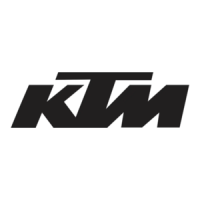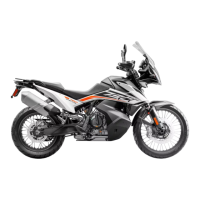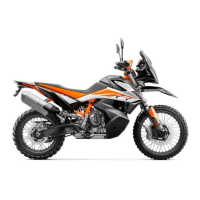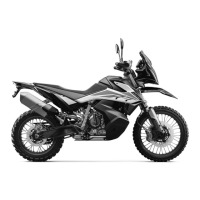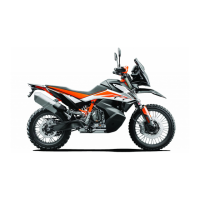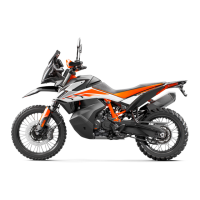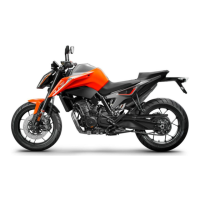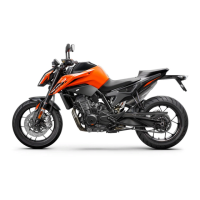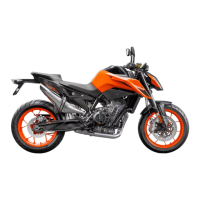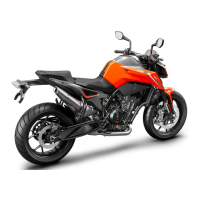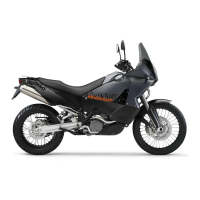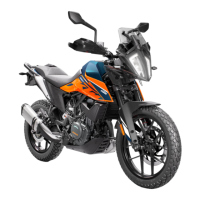What to do if the ABS warning lamp lights up on my KTM Motorcycle?
- NNicole RileyAug 13, 2025
If the ABS warning lamp illuminates, several factors could be at play. It could be due to a blown ABS fuse, in which case you should replace the ABS fuses. Another reason might be significant differences in wheel speeds between the front and rear wheels; try stopping, switching off the ignition, and starting again. Other potential causes include a bent or damaged wheel speed sensor wheel, a damaged wheel speed sensor, or a malfunction in the ABS. Inspect the wheel speed sensor wheel and the wheel speed sensor for any signs of damage. If these steps don't resolve the issue, use the KTM diagnostics tool to read out the ABS fault memory.
